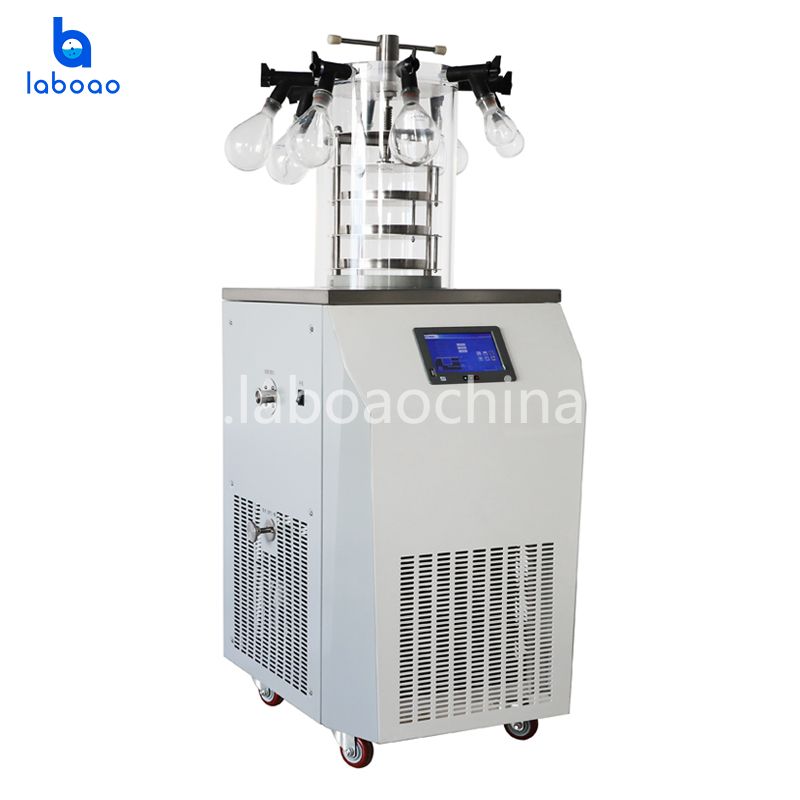Freeze-drying operation precautions for vacuum freeze dryer
The product obtained by freeze drying in a vacuum freeze dryer is referred to as a lyophilizate, and the process of the vacuum freeze dryer is referred to as lyophilization. Traditional drying can cause the material to shrink and damage the cells. The structure of the sample is not destroyed during the freeze drying process because the solid component is supported by the firm ice at its location. When the ice sublimes, it leaves pores in the dry remaining material.
This preserves the biological and chemical structure of the product and the integrity of its activity. In the laboratory, lyophilization has many different uses and is indispensable in many biochemical and pharmaceutical applications. Vacuum freeze dryers are used to obtain biomaterials that can be preserved for long periods of time, such as microbial cultures, enzymes, blood, and pharmaceuticals, retaining their inherent biological activity and structure in addition to long-term storage stability.
To this end, lyophilization is used to prepare tissue samples for structural studies (eg, electron microscopy studies). Vacuum freeze dryers are also used in chemical analysis to obtain dried samples or to concentrate samples to increase analytical sensitivity. Freeze-drying stabilizes the sample composition without changing the chemical composition, which is an ideal analytical aid. Freeze drying can occur naturally. In the natural case, this process is slow and unpredictable. Through the vacuum freeze dryer system, people have improved and subdivided many steps to speed up the process.
Freeze-drying operation of vacuum freeze dryer Note:
1. Do not use if the vacuum freeze dryer is not properly installed.
2. Do not use the vacuum freeze dryer without permission.
3. Do not use the vacuum freeze dryer if the shelf is not placed.
4. Corrosive substances cannot be lyophilized without special safety measures. Even if there is protection, it is guaranteed that the host material will not corrode and will not reduce the mechanical strength of the cold trap, door panels and other accessories.
5. Producers are not allowed to add attachments privately. Do not use if the container is of poor quality, as it is very dangerous to burst the container when lyophilized.
6. Do not use a vacuum freeze dryer in areas where there is a risk of explosion.
7. The vacuum freeze dryer should not hit or move during use, and do not rest or rest on it.
8. Do not place potentially dangerous objects, such as bottles filled with liquid, near a vacuum freeze dryer.
9. Samples that react when lyophilized cannot be dried.
10. Do not freeze dry or flammable samples.
11. Infectious, toxic, pathogenic and radioactive substances must be placed in suitable containers to dry.




